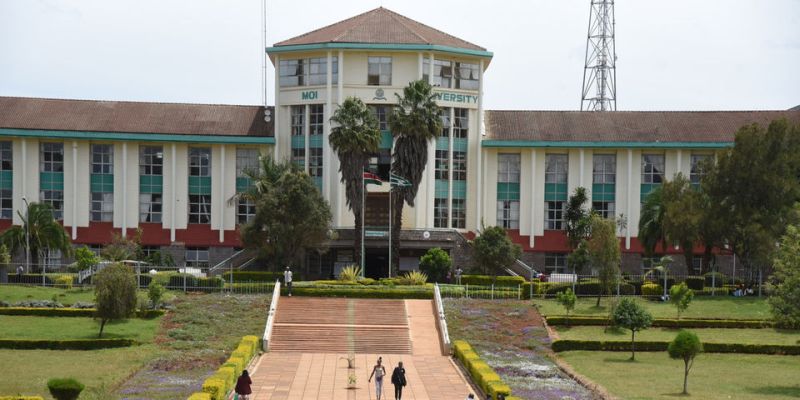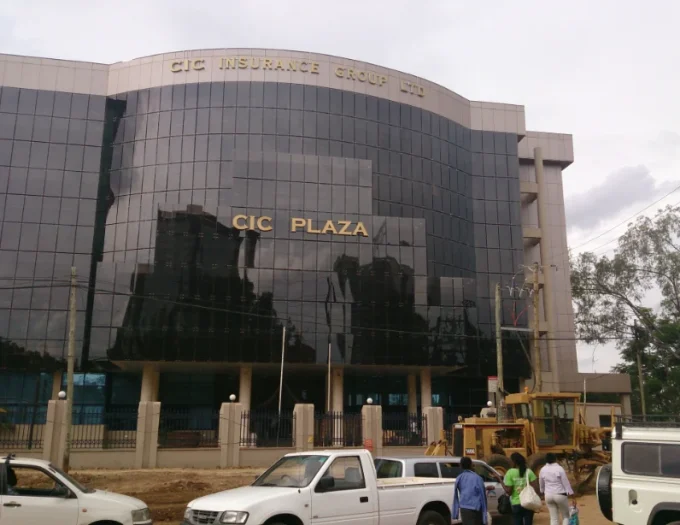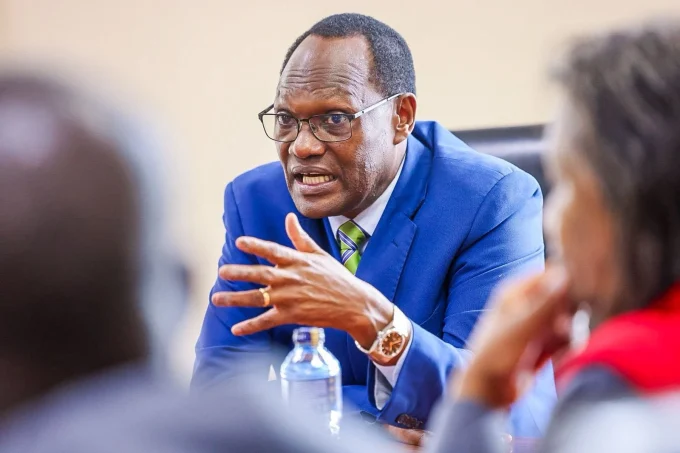In the aftermath of Moi University’s recent closure, its subsequent reopening, and the uncertainty caused by employee work stoppages at its main campus in Eldoret, which paralysed learning for weeks, the university’s chairperson has now spoken clearly about the challenges facing the institution.
Dr Humphrey Kimani Njuguna, Chairman of the Moi University Council, has stated that the institution has reached an inflection point. Moi University, one of Kenya’s most prestigious and oldest public universities, is under financial pressure, affecting the overall progress of its functions and activities.
“The major challenge at Moi University is inadequate finances because the institution, for the past decade or so, has not been able to raise sufficient revenue to meet its expenditures,” said Dr Humphrey in a letter. “The mismatch in revenue and expenditure has created a difficult conundrum, compounding an increasingly dire financial situation.”
> How to Apply for a University in USA From Kenya
According to the Chairman, the inability to raise adequate revenues is driven principally by two factors. First, the institution’s financial sustainability has come under increasing strain following progressive reductions in government grants through guaranteed funding by capitation.
“Since the introduction of the differentiated unit cost model of university funding, the government has progressively reduced the capitation grants from an anticipated 80% of the cost of an academic program to about 38% at the time of its replacement,” he said.
To get a better sense of this challenge, Dr Humphrey explained that the 42% revenue gap was supposed to be met through internal revenues. Yet, the institution heavily relies on public funding, especially after the 2016 KCSE reforms, which shifted government financing to all students rather than to the institutions for a 100% transition across the education sector.
“The government’s support has been integral in enabling the university to spread its wings locally, regionally, and even internationally through financial support and offering the necessary guidance and direction. However, this contribution has come with challenges, the most significant of which are now facing the institution.
For example, the 2023/2024 monthly capitation was Ksh202 million and formed the bulk of funds used to meet the monthly payroll costs of Ksh370 million, as the university implemented the 2017/2021 collective bargaining agreement (CBA) on a horizontal basis upon advice from the Salaries and Remuneration Commission (SRC).
When the Employment and Labour Relations Court ruled that the CBA should be implemented on a diagonal basis, the monthly payroll shot to Ksh403 million. Discouragingly, for the 2024/2025 financial year that started in July this year, the monthly capitation was reduced to Ksh89 million. This reduction left a monthly payroll gap of Ksh314 million, which has been difficult to fill.
In addition, the court directive to implement the 2017/2021 CBA diagonally instead of horizontally instantly created salary arrears that accumulated to about Ksh1.2 billion, which remain unsolved,” Dr Humphrey disclosed.
The second factor hindering Moi University’s ability to collect sufficient revenues is the decline in student enrollment over the last decade. The university has been facing strong headwinds in enrollment figures for its undergraduate programs, which form the bulk of its revenue base, thereby hurting its finances.
“These programs were either government-sponsored or privately sponsored,” the Chairman notes. “To illustrate, in the 2024/2025 academic year, about 6,000 first-year students were placed in the institution, against a declared capacity of over 14,000 students and over 47,000 applicants to the university’s undergraduate programs. The university thus has excess capacity to run undergraduate programs, and upon realising this mismatch, the Council engaged the relevant government entities in modalities for utilising this excess capacity.”
Dr Humphrey concluded that, over time, these challenges have created historic financial pressures for Moi University, and the deepening financial plight can be overcome only by a massive national effort. The university has already received assurances from the Ministry of Education, the National Treasury, the Executive Office of the President, local leadership, and the National Assembly Committee on Education that an initial support of about Ksh3.5 billion will be provided to bail it out of its financial crisis. But will it be sustainable?
He indicated that solutions to this question are being actively considered by the relevant government agencies but can only be implemented in the 2025/2026 academic year. “These engagements need time to bear any fruit.”
> BIC Creates Inspirational Learning Environment at a Primary School in Nairobi













Leave a comment